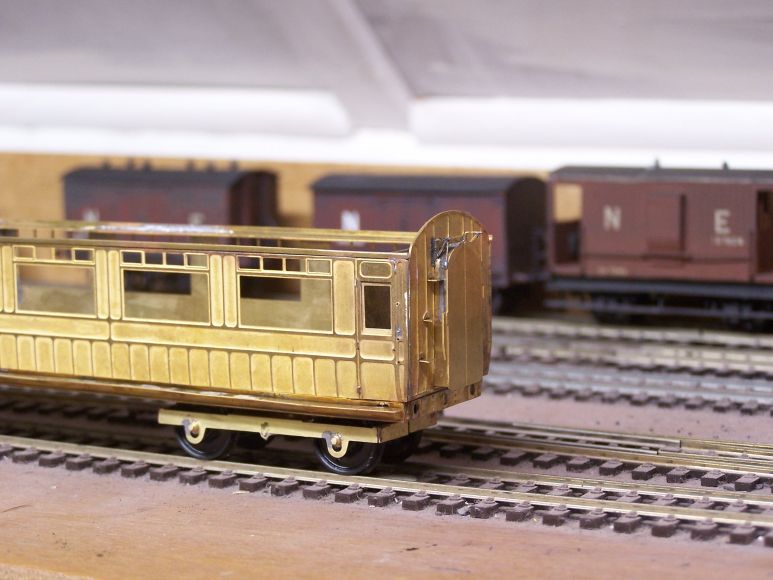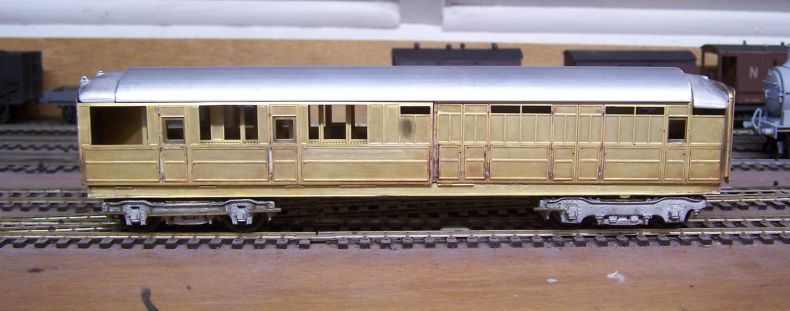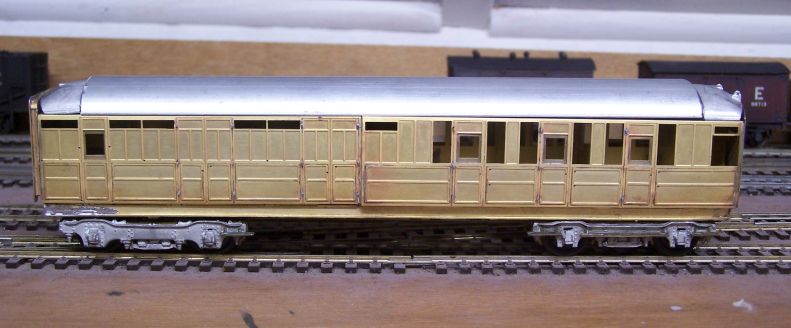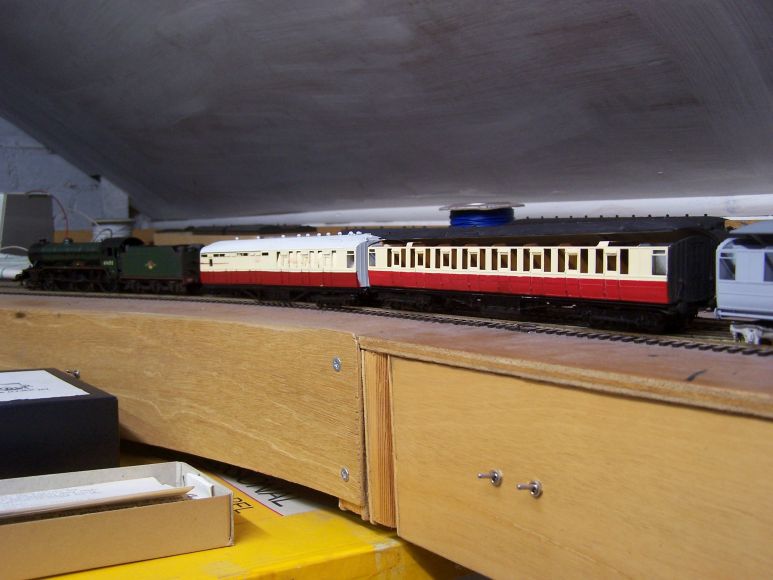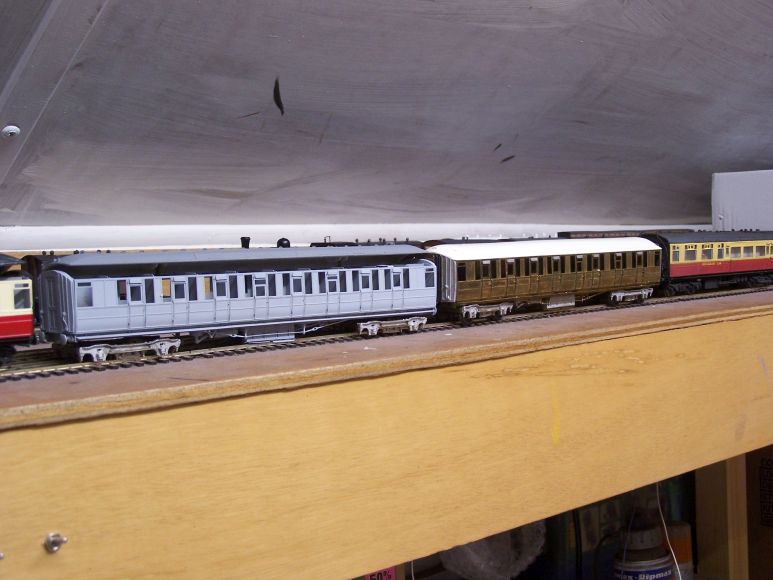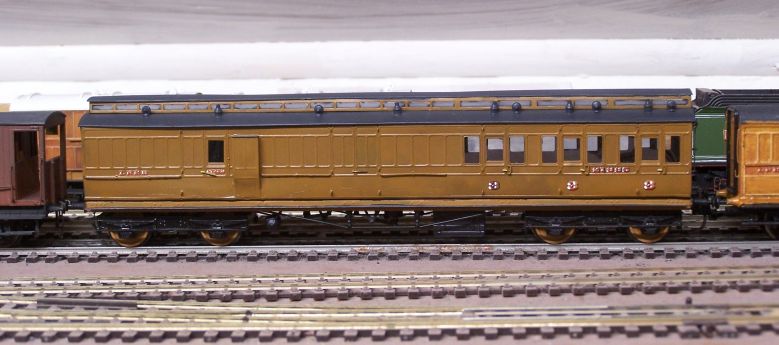
First - and absolutely no disrespect intended to Dave, who has built these well and entirely as they were intended to be built - why do people insist on producing carriages which have removable roofs instead of splitting at the solebar? I'm sorry if you've read this before, but it baffles me. It baffles me even more that the professionals do it when it makes it so much harder to finish them. You'll see in the images below, the minimal space available to paint and finish the interiors or make the changes I want to make here as well as the roof join being much harder to conceal. I was looking at an ECJS vehicle at ground level last week and it's quite apparent that they come apart at the solebar - you can see daylight clear across the thing under the body - so why not have the join where it is on the prototype instead of where it's more obvious and harder to conceal? Dave, bless him, had at least made the roof bolt on rather than gluing it as a lot of builders do. Look at the last picture in this post and imagine what an ordeal it's going to be getting the handrail along the corridor windows. It's all so unnecessarily hard. Don't even get me onto having to prise off a glued roof to replace some glazing which has fallen out, instead of unscrewing the body.
Right, rant over. What do we need to do? The corridor connectors need to come off. They'd have had to be removed for painting anyway, but I've tried to use them before and when placed against another similarly fitted vehicle they're simply too bulky and stop them coupling easily and moving against each other. All the door and commode handles also need to come back off. I know Dave intended these to be finished in teak, but for me they'll make it impossible to mask for blood and custard. I'm not sure how he'd have lined behind the commode handles anyway. The roof needs vent and tank filler holes drilling and destination board holders as well as alarm gear and the rain deflectors. Then there's the bogies and coupling provision. I'll go into those in more detail.
These were built to EM and fitted with what I think Dave said are Mitchell-Pendleton bogies.
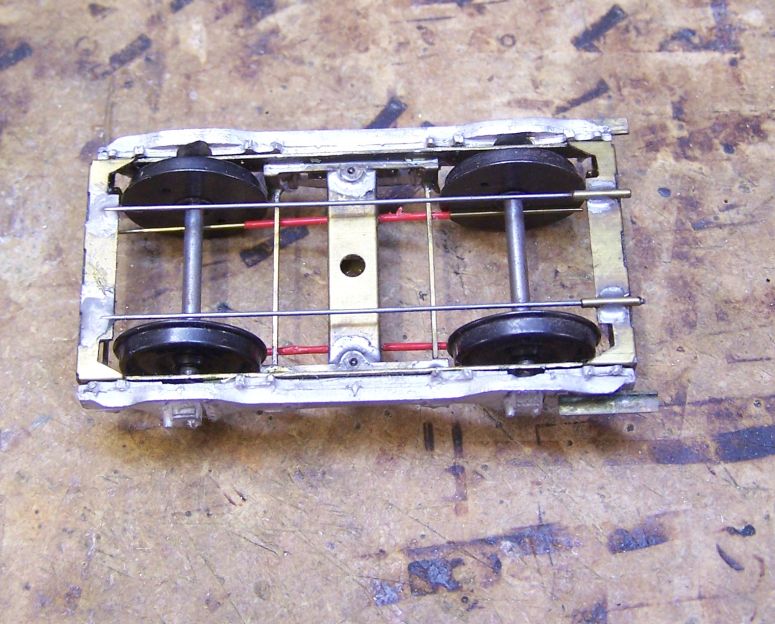
I've had a few carriages with these on from him and had just discarded them (after robbing the MJT sides off a few). However I had been messing about with one one day and was struck by how freely it ran. Given what I said yesterday about this being a heavy train for a (likely Hornby) 4-6-0, I decided to see whether they would regauge to OO.
As you can see above, the bogie has two pairs of wires above and below the frames. These need to go between the wheelsets. The top ones were not a problem, but viewed from underneath it was obvious that OO wheels would foul the retaining wires.

These bogies have two sets of springing: the carriage rests and swivels on the top pair of wires, while each wheel has a sprung bearing which slides up and down in slots in the bogie frame. The bottom wires simply retain the wheelsets, so repositioning them wouldn't have any unforeseen effects on the mechanics of the bogie. I removed the wires from the holes in the bolster and added two short pieces of tube inboard where the shape of the etch nicely located them. Pleasingly, this assembly works and they're beautifully free running. You can see the amended bogie below.

Bogies dealt with, it was time to consider couplings. There was a slot in the buffer beam of each vehicle, presumably for whatever system Dave intended to employ. I use Bill Bedford's etched couplings for carriages (formerly available from Eileen's, but no longer supplied) which requires an 8BA nut soldered to the floor just behind the end of the carriage. Two issues with that:
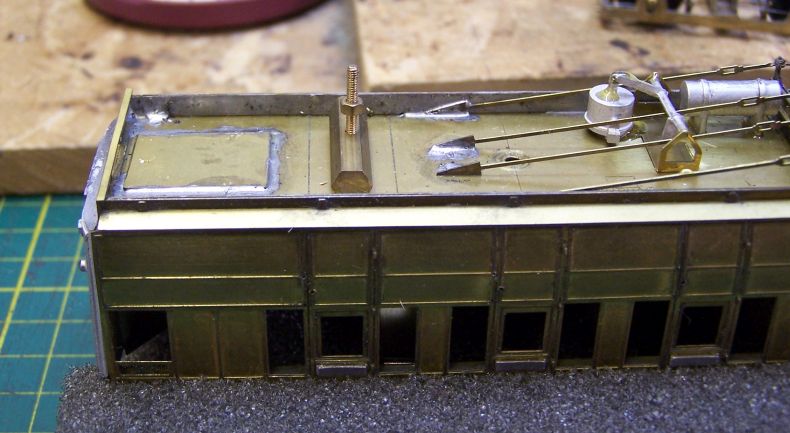
From underneath, a second thickness of brass has been added to the floor where I want to drill through for the nut (the brass hex is the mount for the bogie).

From above you can see how awkward it is to get the iron in and the complete impossibility of going right round the nut with it. In the end I drilled then enlarged the hole and tinned round it first, then positioning the nut and melting it into place. I managed not to melt the end casting or hit any of the whitemetal vent hoods with the iron, but I have two more to do so there's still time.
Incidentally, I now gather that these bogies are still available from Dave Bradwell. I'm tempted to use them again, but we'll see how this set runs once complete.

